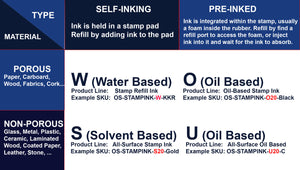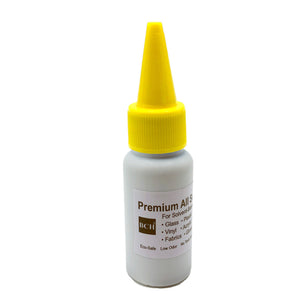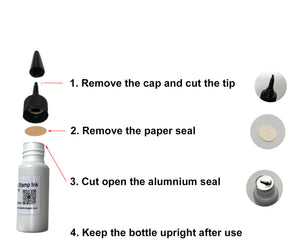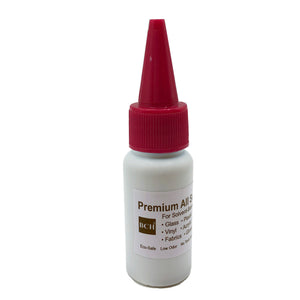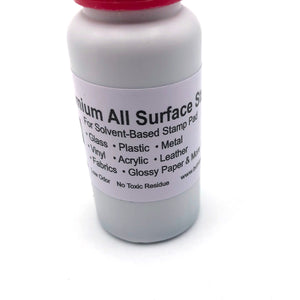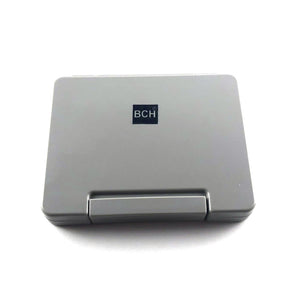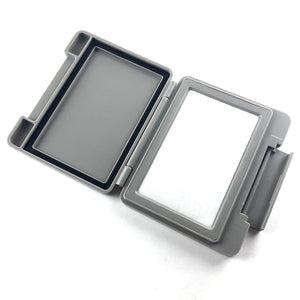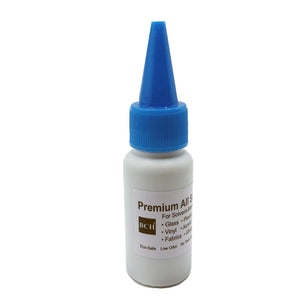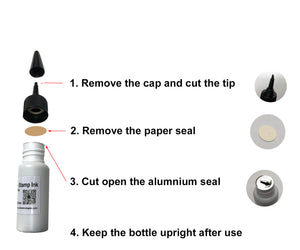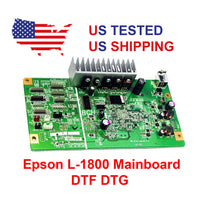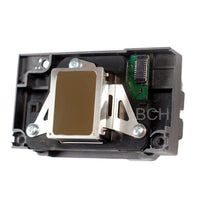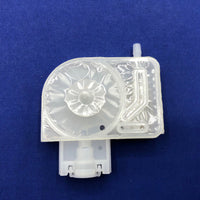
Bulk (1,000 ml) Premium Black Oil-Based Refill Ink for Pre-Inked Stamps & Dot Matrix Printers
$375.99
Say hello to the 1000 ml (1 L) Oil-Based Stamp Ink - the ideal option for those in need of refilling their pre-inked stamps, felt pads, and dot matrix printers. With its bulk packaging, it offers an economical solution for those seeking to save money on their purchases. This ink is identical to the 20 ml retail packaged ink (OS-STAMPINK-O-BK20), but with 50 times more volume. It's the perfect choice for industrial or corporate users.
This non-toxic oil-based ink is safe for both your skin and the environment, with low odor and waterproof after drying. Its outdoor-grade weatherproof and none-fading properties are thanks to its sturdy pigment polymer resin, which won't fade under direct sunlight. Application is simple - just add four to six drops of ink to a dried stamp pad. This ink is compatible with most stamps, including popular brands like Ideal, MaxStamp, Maxum, Plus 2000, ExcelMark, Cosco, and Trodat. If your stamp is labeled "non-refillable," check out the YouTube video for instructions. Refilling dot matrix printers is also possible with this ink - refer to Keith's blog for guidance.
This Oil-Based Stamp Ink is available in black and offers great value, as you can refill your stamps and felt pads for a fraction of the cost of buying new ones. Whether you're using it for stamp foam ink pads, felt pads, pre-inked stamps, or oil-based print ribbons for equipment like dot matrix printers, you can expect a high-quality, durable, and permanent result. Don't over-ink the pad to ensure the best results.
- Saving money by buyin BULK!
- Same ink as the 20 ml retail packaged ink OS-STAMPINK-O-BK20, but 50X volume
- In bulk packaging, may not be individually packed or labeled
- Color: Black
- Volume: 1,000 ml (33.81 oz)
General Instruction
The oil-based ink will be absorbed into either rubber or sponges. The process is a lot slower than water-based ink. However, the ink is designed to last a long time in the open air, so be patient. You will either find an absorbent rubber or refill sponge in your equipment. If you work on a typewriter ribbon that doesn't have those, then the ink needs to be absorbed by the whole ribbon. If your stamp doesn't have a refill sponge, like in the video below, you can drill a hole and create a cavity to fill the ink and let the ink be absorbed over time.
Refill Instruction for Pre-Inked Stamps
Refill Instruction for Dot Matrix Printers
We do not have a Dot Matrix Printer nor a typewriter. Therefore, we rely on our customers. Sending your stories, and we will share them here. Here is Keith's blog for refilling dot matrix printer.
How to Refill a Star Micronics NX-1020 9-pin dot matrix printer - by Keith
I ordered the ink and applied it to the dot matrix ink cartridge, and it worked great. It was less messy than expected, and while I used WAY TOO MUCH, and subsequently needed to cycle the whole cartridge a few times via some paper towels. There's a reinking wheel (which appears to be a spinning sponge, essentially), which wasn't immediately absorbing the ink. So I applied some directly to the ribbon itself. In retrospect, I did try applying through the top of the sponge instead of the side. The ink transfer to the ribbon appears to be done.
Please see the image.

The ideal approach seems to remove the reinking sponge (large black round center object), which is simply sitting there(it doesn't snap into place or anything), apply ink to THE SIDES of the sponge, and let that absorb as much as possible. Reinking the ribbon is also necessary, especially for older, more dried-out ribbons. Given the way it works, the reinking sponge appears to transfer to the small black gear. Then contacts the ribbon itself directly. I think this process is going to be slow and take a while to reink the ribbon. Therefore, also applying ink directly to the ribbon should speed the process. The ink should be applied sparingly and then using a paper towel (or other absorbent cloth) to contact the exposed ribbon. You should remove any excess ink by rotating (counter-clockwise) until a complete circle of ribbon has been cycled. Initial printouts were messy. After about a dozen pages, the quality improves dramatically. I hope this helps.
Related products
Complete Your Purchase
Categories
Add your product to the cart to view shipping rates. We've delivered to 289,762 customers in 149 countries.

Sign up for our newsletter to get weekly coupons and tips on printer refills and repairs.
Got a question? Don't hesitate to email us at support@bchtechnologies.com
Subscribe to Kevin's YouTube channel for the latest tips on printer repair and maintenance.
Recently viewed

I can’t say enough about this company! Sent my main board in for repair and they were fast and the cost was reasonable. They are also quick to respond. This is not the first item I’ve purchased from them and won’t be the last. Also, the YouTube videos are a must to watch!
Nancy Donaldson
Fast Track Mainboard Repair: L1800, XP-15000, ET-15000, WF-7610 7620, WF-7110, WF-7710 7720, ET-8550, ET-2720, ET-2750Printer Mainboard, Formatter Board, Motherboard Troubleshooting and Repair

I have an old Epson ET-2750 eco tank printer, which I have used for years, and since it is uses refillable ink tanks, have used very little ink over the years. I love this printer because I can print lots and lots of pages, including double-sided at very low cost, and it is very reliable. I recently had a paper jam, which is very unusual. When I took off the back panel to clear the jam, I accidentally dropped it on the floor, and when I replaced the back panel, the printer jammed every time I tried to print double-sided. I found a small plastic piece on the floor that fit on one end of the roller, but didn't realize I was missing the other end. I eventually noticed that there was a gear on the back panel next to where the roller fits into the panel. I deduced that I must be missing a gear to pop into the end of the roller, to mesh with the gear on the panel. I couldn't find the missing gear anywhere, and figured my cats must have lost it or my wife might have swept it up when sweeping the floor, and discarded it. Through a Google search, I found BCH Technologies, ordered the part from them, it fit perfectly, and now I can print double-sided again on my faithful old Epson printer. I very much appreciated being able to get the missing part from them. I thought the price for the part and shipping was high for such a small part, but that was the only down side.
Daniel Parker
Duplex Roller Feed Gear for Epson Printers

Best place for parts and accessories I ordered this print head carriage after watching a few bch videos wanted to fix and upgrade my cr encoder sensor while i was at it and i was not let down censor is original and whole assembly is new and never been used could not be happier thank you thanks Kevin!!
Josie Franco
New Genuine L1800 Printhead Carriage Return (CR) Unit






